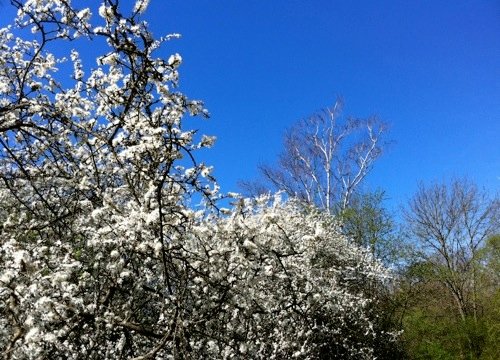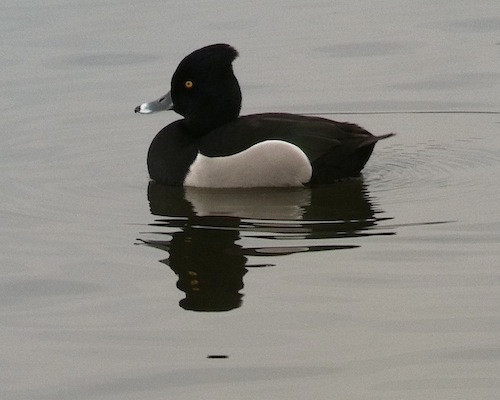The glorious summery weather is back, and I had a good day of birding today, just out of London. On the spring migrant front: masses of chiffchaffs and blackcaps, the odd willow warbler, a single swallow. Also treecreeper, nuthatch, buzzard and so on, but the bird of the day was bullfinch. To capture my immediate, pseudo-spontaneous reaction, here’s the tweet I posted at the time:
Wow. Bullfinch. What a genuinely incredible bird. I must try to see it more often.
And seriously, a male bullfinch in peak spring plumage is as beautiful as any bird I have seen anywhere, including barbets and toucans and hummingbirds… it is a proper cracker.

That’s not my picture, obviously, apart from anything else, it certainly wasn’t snowy today… but what a gorgeous beasty.
So, it was a lovely day out. The sky was blue, there was masses of blackthorn covered in bright white flowers, I saw about seven or eight species of butterfly*. Tasty.

And I was amused to find this on the pavement near my house:

Apparently the local drug dealers are sufficiently well organised these days that they sell their product in cute little cannabis-themed bags. I had no idea. The bag still smells of weed; oh the nostalgia. It almost makes me want to roll up, tune in and drop out.
* Definitely Peacock, Red Admiral, Comma, Orange-Tip; and I think Speckled Wood, Holly Blue, Small White, Small Tortoiseshell.
» The photo Eurasian Bullfinch (Pyrrhula pyrrhula) male is © Steve Garvie and used under a CC by-sa licence.


